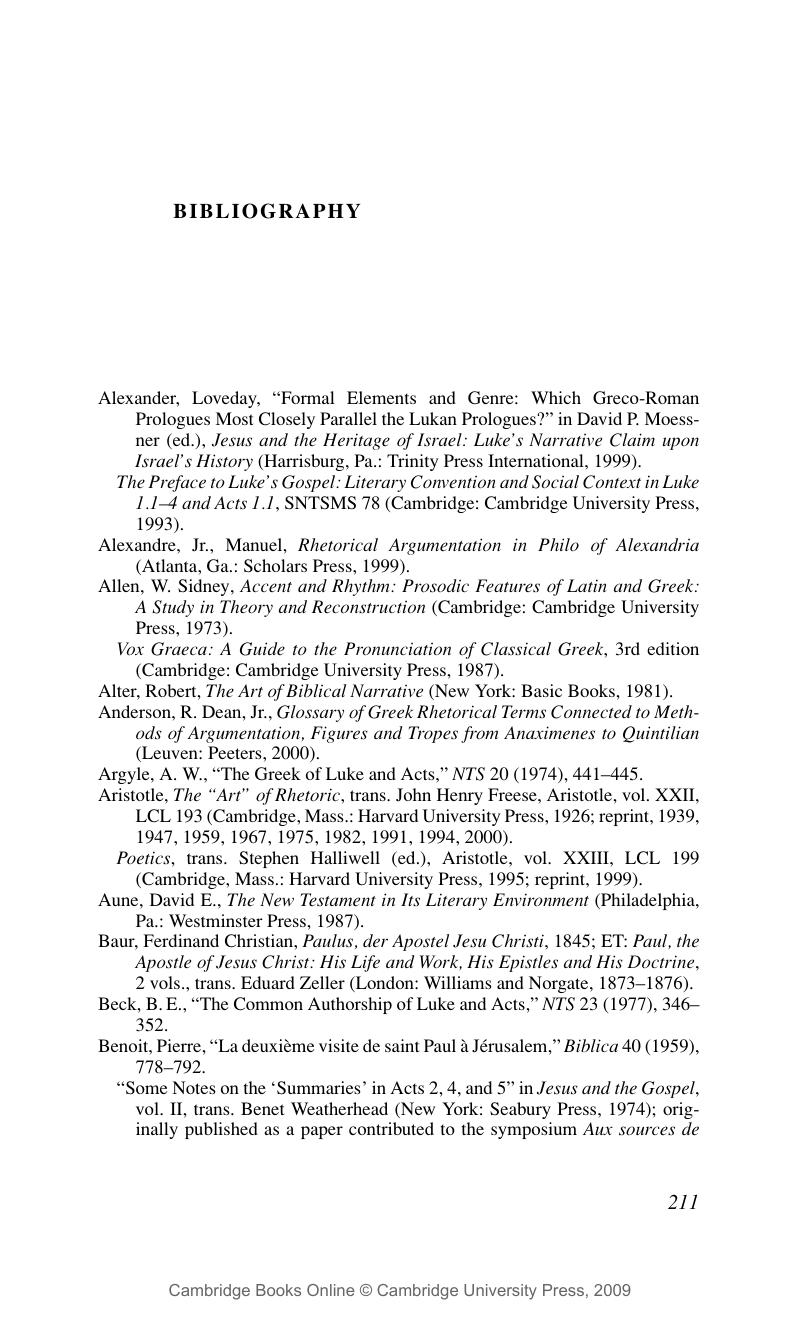Book contents
- Frontmatter
- Contents
- List of figures
- Acknowledgments
- List of abbreviations
- 1 Background and methodology
- 2 Authorial data: seams and summaries
- 3 Authorial criteria: Greek prose compositional conventions
- 4 Authorial unity: analysis results and probabilities
- 5 Final considerations and future directions
- Appendix
- Bibliography
- Index of Biblical and Other Ancient Sources
- Index of Modern Authors and Subjects
- References
Bibliography
Published online by Cambridge University Press: 24 June 2009
- Frontmatter
- Contents
- List of figures
- Acknowledgments
- List of abbreviations
- 1 Background and methodology
- 2 Authorial data: seams and summaries
- 3 Authorial criteria: Greek prose compositional conventions
- 4 Authorial unity: analysis results and probabilities
- 5 Final considerations and future directions
- Appendix
- Bibliography
- Index of Biblical and Other Ancient Sources
- Index of Modern Authors and Subjects
- References
Summary

- Type
- Chapter
- Information
- The Assumed Authorial Unity of Luke and ActsA Reassessment of the Evidence, pp. 211 - 223Publisher: Cambridge University PressPrint publication year: 2009



